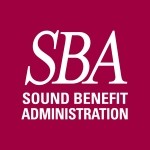You can use a HSA/FSA to pay for many medical, dental and vision expenses tax-free. Click here to see what expenses are eligible.
How do I enroll in the POP?
You will be given an enrollment form to complete. The form gives you a choice to either participate in the POP or to waive your right to participate in the POP. If you participate you will receive a copy of the Summary Plan Description which describes how the plan works.
Why should I participate in the Flexible Spending Healthcare Account when I already have medical, dental, and/or vision insurance?
This account is used to pay for expenses not covered by insurance (see Forms Library for a list of possible eligible expenses). For example:
- Deductibles, Co-pays, and Prescription Drugs
- Eligible expenses not covered by insurance
- Dental Services & Orthodontics
- Eyeglasses, Contacts, Solutions & Eye Surgery
- Chiropractic, Naturopathic, Acupuncture services
- Massage – when prescribed by a medical doctor
- Mental Health Services – for individuals in your family–not marriage or family therapy
- Weight-Loss Programs – when prescribed to treat a specific medical condition
- Over-the-Counter items such as blood sugar testing kits and strips, flu shots, etc.
- Over-The-Counter items
- Over-the-Counter medications when accompanied with a “prescription” from a medical doctor describing the medical condition the medication is for
- Over-The-Counter items
What happens if I pay for expenses that aren’t eligible?
Ineligible withdrawals are subject to income tax plus an additional 20% tax unless the account holder is 65 or older, is disabled or deceased.
Note: Per IRS requirements, you should always keep your receipts on file for any purchases made with your HSA card.
What are the HSA Eligibility Guidelines?
You must be enrolled in a qualified High-Deductible Health Plan (HDHP). You cannot be claimed as a Tax Dependent.
You cannot be enrolled in Medicare, Tricare, another group medical plan (your spouse’s plan, for example), a Health Flexible Spending Account, or a Health Reimbursement Arrangement.
Domestic Partners of the account holder must set up a separate account and may contribute up to the family limit; the account holder cannot use their account to pay a Domestic Partner’s expenses.
If unsure about your eligibility, please consult your tax advisor or IRS publication 969.
